Four of us from the Tucson office visited a recent exhibition at Tucson Museum of Art: The Western Sublime: Majestic Landscapes of the American West. Here are some takeaways from Elise Christmon, Luke Cole, Corinne Matesich, and Grace Wofford about the artists, the work, and our reflections on: “how artists adopt or deconstruct the centuries-old definition of the sublime in landscape images of the American West.” The show will be up until February 9.
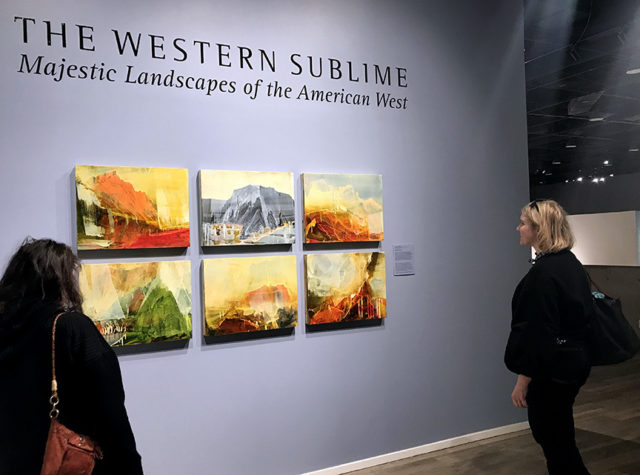
The meaning of sublime is a sense of awe that includes both joy and terror. Which artwork most reflects the scary side of sublime for you, why?
Elise: My first impulse is to say any landscape that doesn’t show water because I immediately jump to a fear of survival in harsh environments. Water brings a sense of safety.
Corinne: The paintings at the entrance to the exhibit by James Lavadour (Walla Walla) are abstract pieces, with bright colors that range from sky blues, slate grays, and hot orange. The different panels making up Land of Origin, 2015, are composed in streaks and drips of paint. This abstraction makes my mind wander, seeing all kinds of terror—like “badlands” hills or dismal mine tailings. Three of the panels have so much orange that I see wildfires and the memories of watching Mt. Lemmon burn. On certain glances, the shapes look like erosion, earthquakes, smoke, rain, and eruptions.
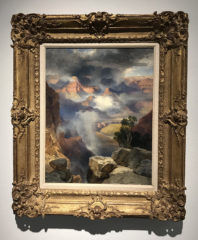
Luke: Physical scale is a powerful factor in imparting the fearsome aspect. The idealized scale and imposing panoramas of artists such as Albert Bierstadt are sometimes exaggerated, but they arguably convey more truth of feeling than a literal representation might. In the towering heights, sprawling plains, and uncontainable skies that make up western immensity, the viewer is disconcerted not just by spatial extents, but also by an implied passage of time, that expands so far beyond the human experience that we have to contend with our inability to comprehend them.
Grace: I think the use of moving floor projections in the piece Mountain Song by Steven J. Yazzie made me feel a little disoriented and almost dizzy. The video made reference to the Apollo moon landing and the idea of “space as the last frontier.” The disorienting feelings of discovering something unfamiliar and feeling physically uneasy mirrors the uncertainty and larger feelings of insignificance that can be elicited when observing the sublime southwestern landscape.
Some artworks in the exhibit contain people, while others are just landscapes. Do you prefer one over the other, why?
Elise: Mostly, I found myself asking why all the people seem to be functioning as some sort of archetype. I don’t get a sense of individuality from images of distant cowboys and their cattle, or some outdated colonialist depiction of Native Americans. If anything, it’s the landscapes that are created like individuals with their own histories and personalities.
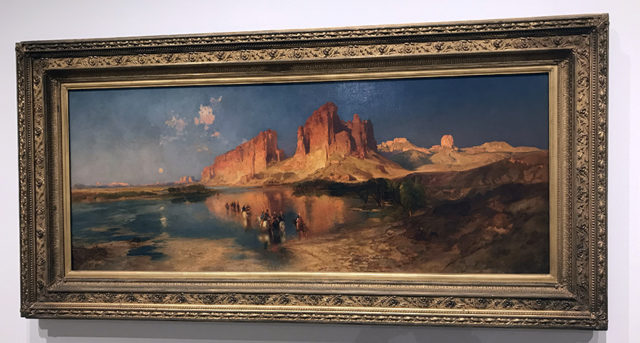
Have you been to any of the places depicted in the artworks in the exhibit? Does having your own experience from that location affect how you interpret the artwork? How?
Luke: I’ve Seen the Elephant, a painting by Vann Bob depicts Elephant Head, the 1000’+ rock formation to the east of the Santa Cruz River near Amado. Elephant Head, to me, indicates the transition into the southern stretch of the Santa Cruz River, where the river’s more wild floodplains and the expansive ranches dominate the landscape. Seeing a familiar sight depicted in artwork makes me feel like I have VIP access to the image—not only do I aesthetically enjoy it, but I also feel a kinship with the artist and the location.
What painting evokes a sense of smell for you, and what does it smell like?
Corinne: The basket as landscape piece, A Hairy Situation, 2018, by Terrol Dew Johnson (Tohono O’odham) is made of plant fibers, wood, and horsehair. If you were able to, sticking your nose up to the opening of the basket would bring an earthy, natural aroma that’s obviously gonna smell a lot like straw. And, that’s reminiscent of being in an upper grassland biome.
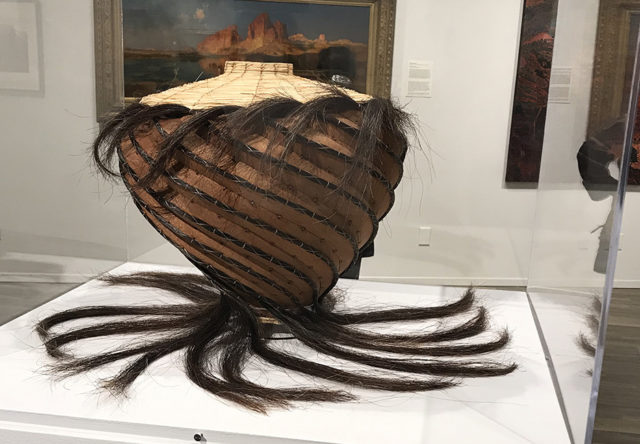
What role do you think an artist perspective plays in how we view, communicate about, and advocate for landscapes?
Grace: I think artists play a significant role in the ways we view, value, and talk about our surroundings. While the landscapes we live in are something we are used to seeing every day, considering an artistic take on them can help us view it from a new perspective. Artworks can expose you to places you’ve never been to and feelings you’ve never had before. By making artwork, the artist can help us think critically about our natural surroundings, our role in them, and the value they bring into our lives.
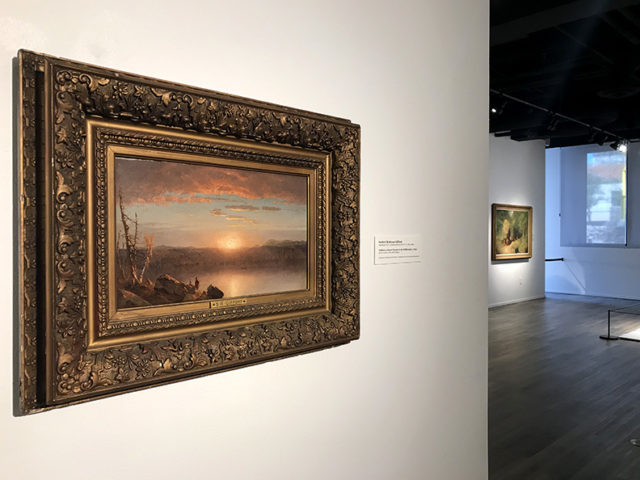
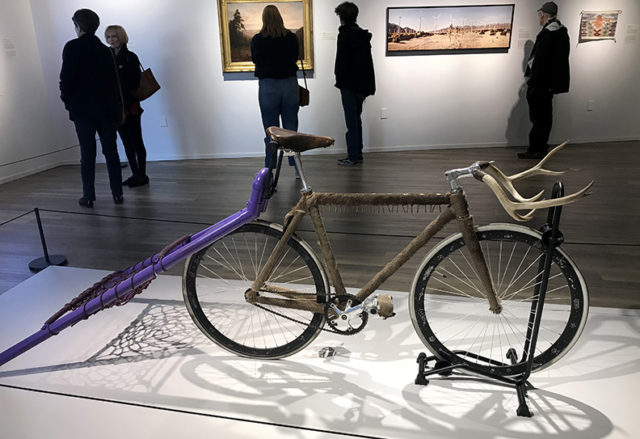
Blog Post By: Elise Christmon, Development Manager, Luke Cole, Associate Director for Resilient Communities and Watersheds, Corinne Matesich, Marketing Communications Manager, Grace Wofford, Marketing Communications Intern.
